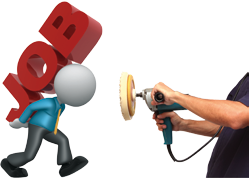Today, companies must re-assess their talent needs in order to remain competitive and drive growth. The satellite communications industry faces challenges but remains ripe with opportunities. Great talent can make a huge impact. Employers need to get it right and make a “great hire.”

For CEO’s and hiring managers, what could be more straightforward than interviewing candidates? You are managing people and growing your business. Interviewing and hiring is just another aspect of your business.
Not so fast.
Maybe it is time to change the conversation for the interview. Do these considerations make you think differently about interviewing today:
• What type of talent are you seeking? Hire the smartest candidate? Hire the most qualified? Hire the candidate with
the best potential? Hire the cheapest?
• When developing your interview questions, are you wondering if your candidate has already been practicing, rehearsing and “polishing” the answers?
• How have you the CEO / hiring manager been able to neutralize the emotional bond you have to your company and make an objective analysis of the candidate?
• If you are a believer of First Impressions, how do you know if the candidate is meeting you right after receiving some really good news or some really bad news
that has influenced your first impression experience?
• Are you winging-it or are you conducting a discussion to determine if the candidate can solve the business problem you defined?
The evolution of business is a simple fact of life. Trends are changing constantly. Businesses hire critical talent to solve an important business problem. There is little margin for error. You have to get it right.
If we agree the stakes are high, then we must also agree that the most effective interviewing efforts in the past may no longer be the most effective efforts today. For example, job seekers now have an industry of resources at their disposal who will provide resume writing, interview preparation, interview rehearsing, interview role playing, interview filming and additional job seeking assistance.
“Candidate-polishing” has become a big business. How does a hiring managing remain an effective interviewer?
The most effective interviewing approach is the one that is most effective today! (Not the one that used to be the most effective.)
Getting positioned to be an effective interviewer may require an adjustment to your interviewing philosophy as well as your interviewing execution.
As a hiring manager, do you want to hire a smoothly polished candidate or do you want to hire a professional who fits the culture of your business and solves your business problem? Does the best interviewee make the best employee?
It can be argued that individuals who score well as impressive candidates in a traditional interview may not necessarily be great employees. They may be too focused on polishing their candidacy and not focused enough on the solving the business problem they would be hired for.
On the other hand, those who are great at solving their employer’s business problem day after day, may lack the necessary interview savvy to project the appearance of being a strong candidate.
Strange as it may sound, the candidates with “over the top” interview skills may make terrible employees and the lesser skilled interviewees (who spend their time actually solving business problems) may make the best employees.
How can the interview be adjusted? Is the interview approach and the interview positioning due for a change? Is it time to change the conversation?
If we strip away all of the hiring manager’s interviewing techniques, the heart of interviewing is to enter into a dialogue that would reflect the candidate’s true personality and qualifications.
“Changing the conversation” starts with the hiring manager. The hiring manager has to take ownership of the hiring process and lead it by example. No one can do it for the hiring manager if you really want to get it right.
The hiring manager needs to become the owner the hiring process. The hiring manager needs to place a dedicated amount of time toward interviewing and the overall hiring process. Many times, strong candidates get turned off by hiring managers due to their lack of follow-up and apparent lack of interest in the candidate.
As part of “changing the conversation”, hiring managers need to define and declare the business problem they need to solve by hiring talent. A tone of openness is critical in positioning the hiring manager and the business. The tone is saying “Our business needs the talent of someone who knows how to solve our problem better than we currently can.”
While our discussion on positioning and “changing the conversation” has been brief, it can’t be over emphasized in its importance. The goal is for candidates to see this as a fresh approach and as a result, for candidates to take an open and direct approach with their responses.
Effort and resources have been invested in studying human nature and then applied to “candidate-polishing”. What if interviewing were to remove all of the sophisticated techniques and instead, it involved a straightforward conversation?
There is a win-win. Employers are seeking the best fit which combines both a technical qualification and a cultural fit. Candidates want to join an organization where they can excel. It doesn’t mean that everyone is suited for every job. It is not a failure for a candidate to recognize they are not the right fit during an interview. It is worse when the candidate exaggerates their qualifications only to fail in their new role within the first 30 days.
Once positioned correctly, executing the interview is easy and enjoyable. It transitions into less of an interview format and more of a conversation. I prefer to speak with a candidate in multiple conversations for 20 to 30 minutes instead of one meeting for several hours. This allows for the ability to reflect on each conversation and observe consistencies or inconsistencies.
Summary of the Interview:
• The hiring manager discussing their business and their business problem in some detail.
• Then the candidate may have questions based upon the hiring manager’s initial comments.
• Once the hiring manager establishes more of a dialog approach and less of an interrogation style, a candidate will relax.
• A relaxed candidate is more likely to resemble what they will be like as an employee and less what they are like through the influences of being a polished
interviewee.
• The contents of the dialog should include the interviewer’s focus on the candidate’s capability to solve the business problem they are interviewing for. Here
is where the so-called interview questions should be conducted.
• Note, in my experience, strong candidates ask excellent questions. Candidates should be invited to ask questions. Their questions alone tell a lot about
them.
• The hiring manager asks the candidate to discuss their thoughts and their qualifications on solving the hiring manager’s business problem.
• As the interview conversations further develop, some form of an action plan should evolve. Through the collaboration of the hiring manager and the
candidate, an agreed to “plan of attack” needs to be developed.
• Through the development of some form of an action plan, the hiring manager is determining in real time if they are compatible with the candidate and if
they are convinced the candidate can deliver results.
• Through the development of an action plan, the candidate is able to evaluate their compatibility with the hiring manager in real time.
• The outcome from an action plan places the newly hired talent as a fully vetted professional with a clear direction of their new role starting on day one of
employment.
• Obviously candidates who could not effectively address solving the business problem and develop an action plan did not end up being hired.
• Through several interactions, the hiring manager will have developed a feeling about the candidate along with some concrete data.
• My experience is that the best candidate is the individual who meets the minimum technical requirements while at the same time is the best cultural fit,
having the best chemistry with the hiring manager.
This interviewing positioning and “change of the conversation” philosophy can be applied to most any field of business. The specific industry’s details become intertwined into solving the business problem and intertwined into the interview discussion.
To hiring managers who are looking to change the conversation and have a better interview outcome, here is an opportunity to consider the most effective approach today.
Good hunting.

About Boxwood Search + the author
Boxwood is a management, consulting-recruiting firm with offices in the greater Washington, DC region and in the Tampa Bay, Florida area. Boxwood provides solutions for employers needing critical talent.
As a dedicated, consulting resource to the employer, Boxwood develops strategy for organizational growth through the evaluation and acquisition of critical talent. Market sectors include: SATCOM, Government Contracting, Communications and Technology. Bert Sadtler is an invited speaker to discuss the shift in the recruitment paradigm toward acquiring critical senior level talent as well as the shift in the employer’s performance based compensation model.
Bert can be reached at BertSadtler@BoxwoodSearch.com.


